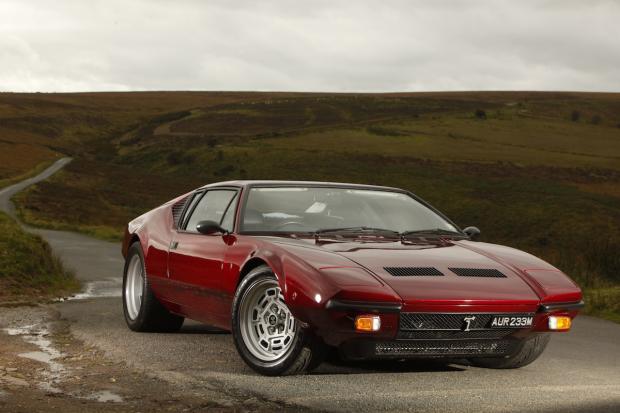
An Italian supercar powered by an American V8 sounds like the perfect combination of looks and durability, a fact that’s confirmed when you set your eyes on a De Tomaso Pantera.
All have awesome styling – penned by Tom Tjaarda – but go for an early car and there’s a subtleness to the aggression that makes it close to perfect. Johnny Woods’ stunning example (shown here) featured in C&SC, December 2011.
The styling was one thing, though, and the Pantera received mixed reviews at launch, with Car and Driver stating: ‘While all of its beholders were ardently wishing that they were in the driving seat, the driver was usually wishing, with equal fervor, that he was not.’

That seems a trifle harsh because, just a year later, Motor declared: ‘The Pantera is not just a safe and highly accelerative cornering machine. It is also completely practical for long-distance touring, with a roomy cockpit, plenty of luggage space, an adequate ride and a reasonable level of refinement.’
Motor’s summary is probably spot-on for a nicely fettled example today, with larger modern alloys (often to the style of the originals) shod with lower-profile tyres, further enhancing the handling and grip.
While the Ford Cleveland V8 that powers the Pantera is undoubtedly more durable than contemporary units from Italy, and cheaper to maintain, it was not without its faults.

A baffled, enlarged sump is a must to prevent oil starvation during hard cornering, any tuning should have been carried out by a reputable garage and look for the peace of mind of a full service history.
Oil in the ZF transaxle – shared with the GT40 and Maserati Bora – should be changed once a year and parts are readily available from the USA, although a rebuild requires specialist knowledge (and will be costly).
Cooling was always a weakness so cars with more efficient aluminium radiators and big fans are preferable – check that they work, though.

The original brakes were good, but will seize through lack of use, while pre-1980 plain rear wheel bearings rapidly wear stub axles. Fitting new axles with double-width roller-type bearings should solve this. Also check for rot, which can crack wishbones or wreck their supports.
The fusebox can be found on the side of the right-hand footwell and relays on the left-hand side. Additional relays are vital for the headlamp and engine-fan circuits.
With an all-steel body, rust is one of the biggest concerns and it can affect the lip of the front hatch, the valance and crossmember under the radiator, the A-post, wings, sills, door bottoms, rear section of the roof, the lower lip of the engine cover, B-post, chassis legs and rear crossmember. Inspect everything in fact!

Help can be found at www.panteraplace.com, www.qv500.com, www.detomasodc.co.uk and www.panteracars.com.
One of the cheapest options can be found at the www.europeanvintagecarcompany.com for £30,000. Amusingly described as ‘absolutely good’, it looks fantastic, has just 22,447miles on the clock and there’s apparently no rust. It is completely original, but currently in Arizona and fitted with a US-spec front bumper.

The only Pantera on our classifieds is also across the pond, priced at $63,950, but it does have attractive features such as a rebuilt engine, with an upgraded camshaft and an oversized radiator.

One of the nicest examples that we could find, though, was this car in Denmark, said to be in ‘very good condition both mechanical and cosmetically’, all that worries us is the POA tag.

With sublime looks and performance to match, the Pantera offers everything you could want from a classic supercar. Take time buying one and you’ll end up with a sorted machine that should be cheaper to fix than the competition and just as desirable.
